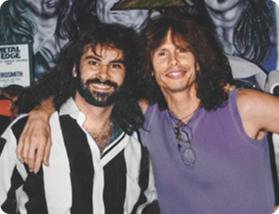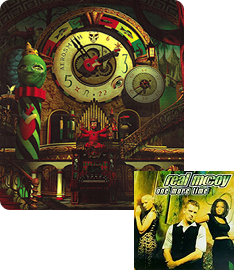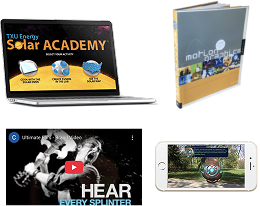Where It All Began.
Before I was designing digital ecosystems and workforce programs, I was designing experiences — for audiences, fans, brands, and bands.
From rock bands to record labels, from game studios to global campaigns, these early projects taught me how to connect people through story, technology, and emotion.

How a late-night treatment for Aerosmith led to co-founding the interactive division of Robert De Niro’s Tribeca Productions — launching pioneering multimedia projects that combined music, storytelling, and design, including Nine: The Last Resort (hailed by Entertainment Weekly as “the best of the year”) and an enhanced CD for Real McCoy and Arista Records that reimagined how audiences could experience music in the digital age.
Founding Creative Spark taught me to build teams, grow a business, and deliver award-winning work for global brands like Logitech, PG&E, and Bank of America — creating powerful digital experiences that ranged from product videos and campaigns to large-scale initiatives. Those years honed my ability to connect strategy, storytelling, and technology — lessons I still apply to every experience I design today.
Translating Experience Into Strategy
These projects weren’t side chapters — they were training grounds.
They taught me how to engage and move an audience, build teams, bridge disciplines, and turn abstract ideas into immersive experiences.
That foundation — equal parts creative risk and structural rigor — drives my Strategic UX and Workforce Innovation work today.
Every system I design still begins with the same question:
How do we engage people meaningfully — crafting experiences that flow naturally, empower progress, and connect through emotion and purpose?
Before I was designing digital ecosystems and workforce programs, I was designing experiences — for audiences, fans, brands, and bands.
From rock bands to record labels, from game studios to global campaigns, these early projects taught me how to connect people through story, technology, and emotion.

How a late-night treatment for Aerosmith led to co-founding the interactive division of Robert De Niro’s Tribeca Productions — launching pioneering multimedia projects that combined music, storytelling, and design, including Nine: The Last Resort (hailed by Entertainment Weekly as “the best of the year”) and an enhanced CD for Real McCoy and Arista Records that reimagined how audiences could experience music in the digital age.
Founding Creative Spark taught me to build teams, grow a business, and deliver award-winning work for global brands like Logitech, PG&E, and Bank of America — creating powerful digital experiences that ranged from product videos and campaigns to large-scale initiatives. Those years honed my ability to connect strategy, storytelling, and technology — lessons I still apply to every experience I design today.
Translating Experience Into Strategy
These projects weren’t side chapters — they were training grounds.
They taught me how to engage and move an audience, build teams, bridge disciplines, and turn abstract ideas into immersive experiences.
That foundation — equal parts creative risk and structural rigor — drives my Strategic UX and Workforce Innovation work today.
Every system I design still begins with the same question:
How do we engage people meaningfully — crafting experiences that flow naturally, empower progress, and connect through emotion and purpose?

